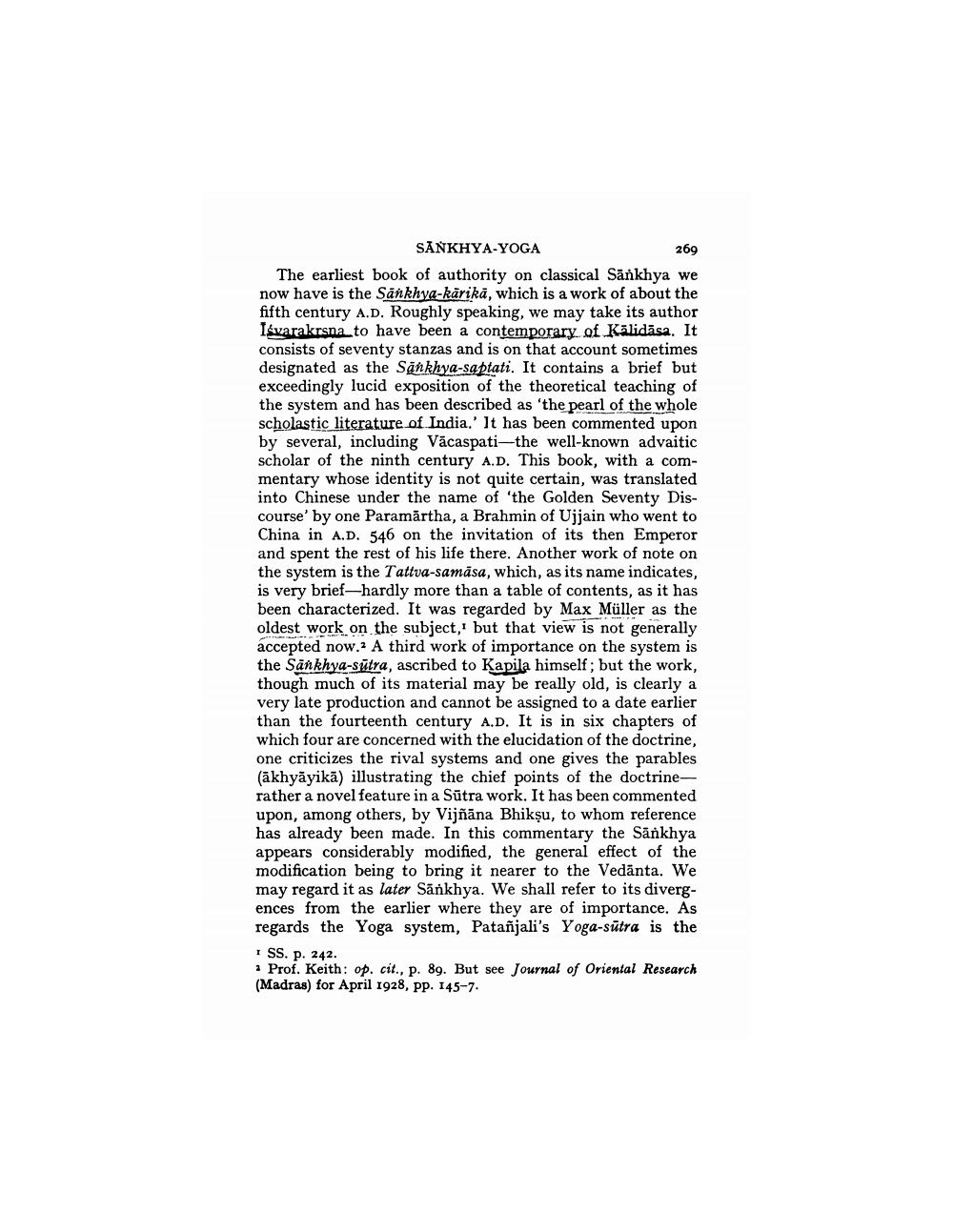________________
SANKHYA-YOGA
269 The earliest book of authority on classical Sankhya we now have is the Sankhya-kārikā, which is a work of about the fifth century A.D. Roughly speaking, we may take its author Isvarakrsna to have been a contemporary of Kalidāsa. It consists of seventy stanzas and is on that account sometimes designated as the Sankhya-saptati. It contains a brief but exceedingly lucid exposition of the theoretical teaching of the system and has been described as 'the pearl of the whole scholastic literature of India.' It has been commented upon by several, including Vācaspati-the well-known advaitic scholar of the ninth century A.D. This book, with a commentary whose identity is not quite certain, was translated into Chinese under the name of 'the Golden Seventy Discourse' by one Paramartha, a Brahmin of Ujjain who went to China in A.D. 546 on the invitation of its then Emperor and spent the rest of his life there. Another work of note on the system is the Tattva-samāsa, which, as its name indicates, is very brief-hardly more than a table of contents, as it has been characterized. It was regarded by Max Müller as the oldest work on the subject, but that view is not generally accepted now.2 A third work of importance on the system is the Sankhya-sūtra, ascribed to Kapila himself, but the work, though much of its material may be really old, is clearly a very late production and cannot be assigned to a date earlier than the fourteenth century A.D. It is in six chapters of which four are concerned with the elucidation of the doctrine, one criticizes the rival systems and one gives the parables (ākhyāyikā) illustrating the chief points of the doctrinerather a novel feature in a Sūtra work. It has been commented upon, among others, by Vijñāna Bhikṣu, to whom reference has already been made. In this commentary the Sankhya appears considerably modified, the general effect of the modification being to bring it nearer to the Vedānta. We may regard it as later Sänkhya. We shall refer to its divergences from the earlier where they are of importance. As regards the Yoga system, Patañjali's Yoga-sūtra is the I SS. p. 242. * Prof. Keith: op. cit., p. 89. But see Journal of Oriental Research (Madras) for April 1928, pp. 145-7.




